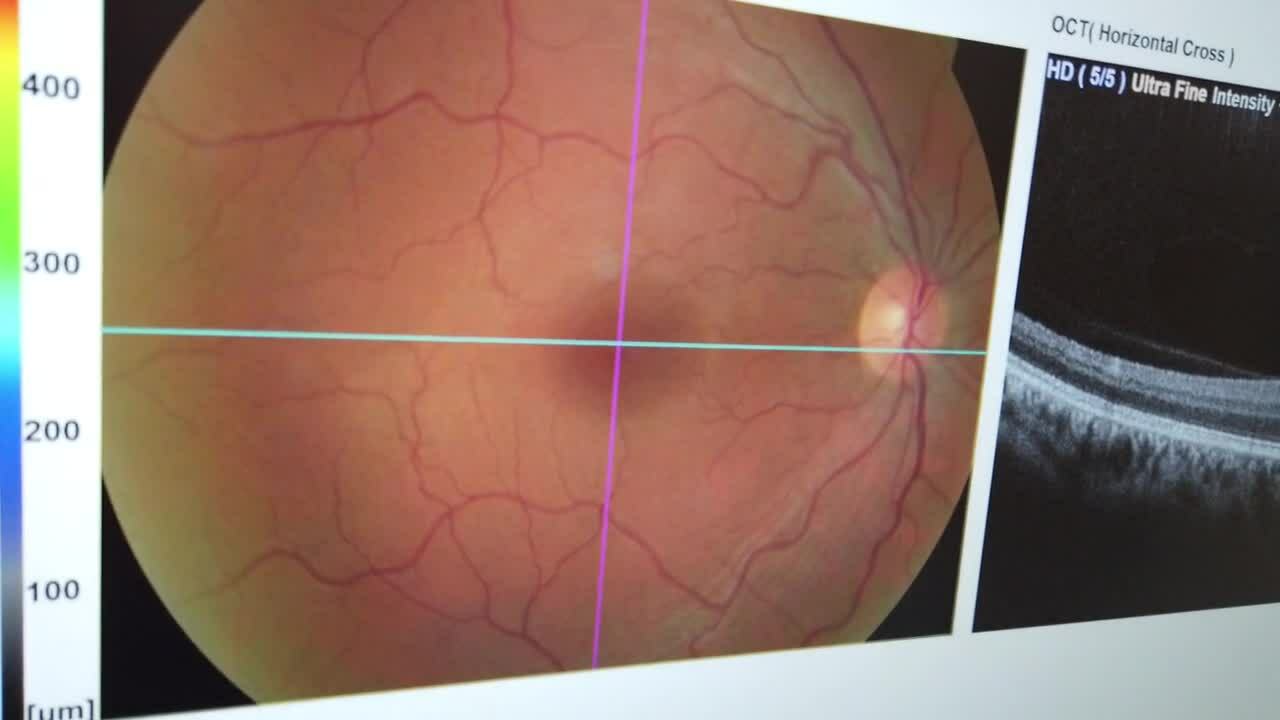
OCT stands for Optical Coherence Tomography and is a scan through the structure of the back of the eye. It looks a bit like an ultrasound, but it uses red light to scan through.
We are sure you want to know that your eyes are healthy. An OCT scan provides additional peace of mind and reassurance that your eyes are as healthy as we think they are. It allows us to detect signs of eye disease at a much earlier stage, often years before we can detect problems with more traditional methods of examination. This is particularly relevant for glaucoma and macula degeneration. Early detection of eye disease allows for better protection of your vision.

It is painless and harmless and takes seconds to perform.
This technology is a bit like the eye’s version of an MRI-scan or ultrasound, in that it provides a much more detailed, 3D assessment of the back of your eye. It allows us to look at the layers of the retina (the back of the eye) rather than just looking at the top of the retina – a bit like looking down onto a cake, we can see the icing but can’t see the layers inside the cake. The OCT allows us to see these layers. This is where the OCT scan is so useful. The scan is like a slice through the cake so we can see the structure of the part of the eye we want to look at. It provides a permanent, digital record of how your eyes look at a specific moment in time, providing a baseline for all future visits. Uniquely, the OCT software can analyse subsequent scans to detect signs of change that may be the indication of early eye disease.
The scan is useful in a whole host of different situations; if we see something that needs investigation or vision has dropped and doesn't improve with glasses. One of the most useful aspects of the OCT is for looking for glaucoma, and is recommended that everyone with a family history of glaucoma has a scan every 12 months. Because the scan shows us the structure it can show us if nerve cells in the retina are changing which can be a precursor to glaucoma, whereas some traditional methods for glaucoma checking, such as visual fields, can only show when the eye is already damaged. The really great use of the OCT is actually in monitoring healthy eyes. We recommend it's use in every patient over 40 and for specific situations in younger patients. If you have a family history of glaucoma or macula degeneration then you really do need to be having regular OCT scans.
CUSTOMER REVIEWS
Our number of 5 star reviews is always growing. Here is what some of our current clients have to say
We have used Village Optician for a few years now. Having tried the usual High St opticians previously, we find them very professional, friendly, nothing is too much trouble, and they take time to explain any issues. It is refreshing not to be rushed and feel pressured into buying new spectacles at every visit.
The Hudspeths
I visited the Village opticians recently and today collected my new glasses. From the first meeting with the staff to collecting my glasses what a fantastic experience everyone has been so friendly and helpful. I explained I had a problem getting a frame to fit correctly, they told me It wouldn’t be a problem they could sort it. This is the first time I have gone to collect glasses and have them fit first time also the lens they recommended are great. I saw the reviews on line before I visited this opticians and can say I agree with their comments. Your eyesight is precious and this opticians go the extra mile to make sure you receive the best treatment.
Mrs Margaret P
I have used The Village Optician for the first time and have been very impressed with the service I have received. I felt the eye test was very thorough and choosing new frames was easy as their range is extensive. Very professional and friendly service from start to finish. I highly recommend this opticians.
Angela M